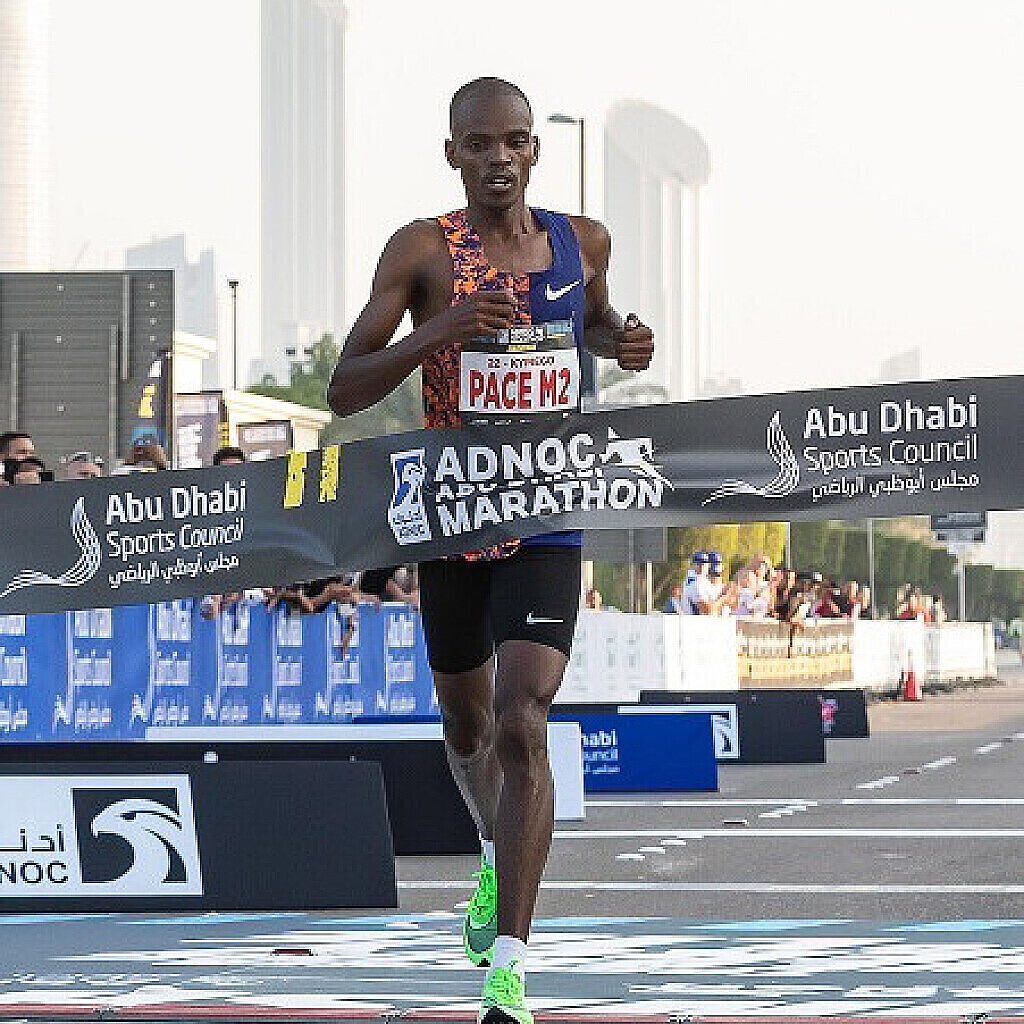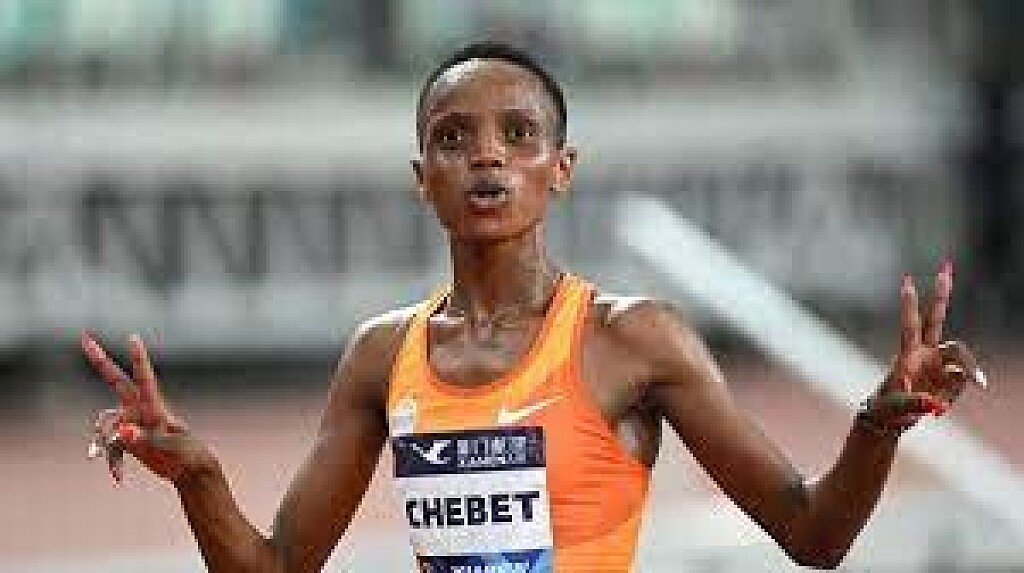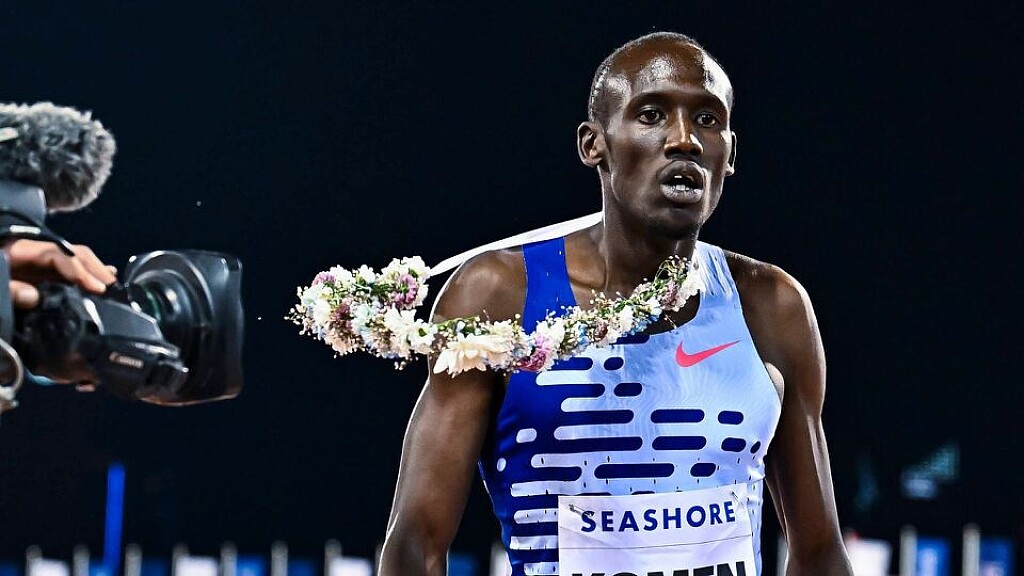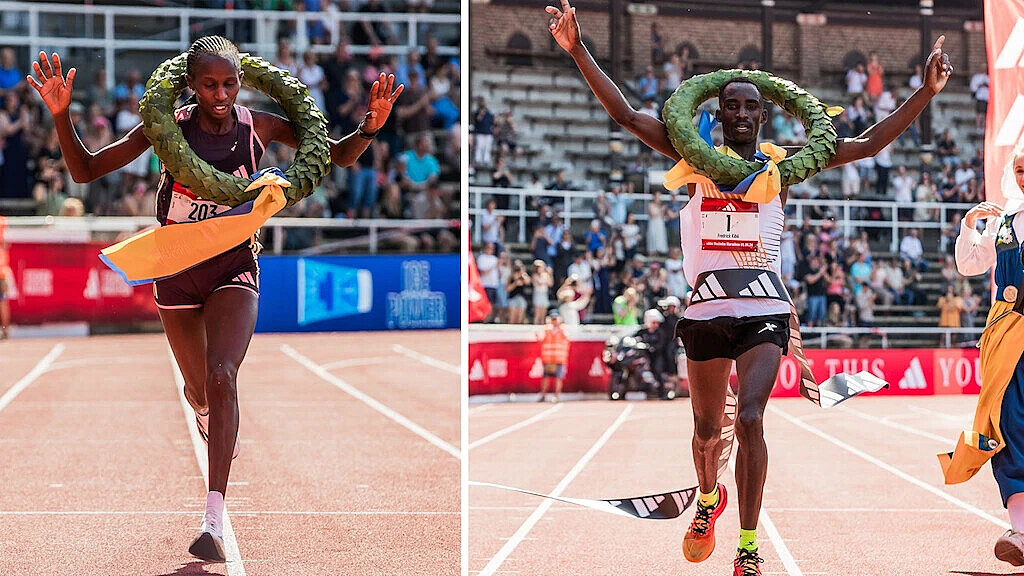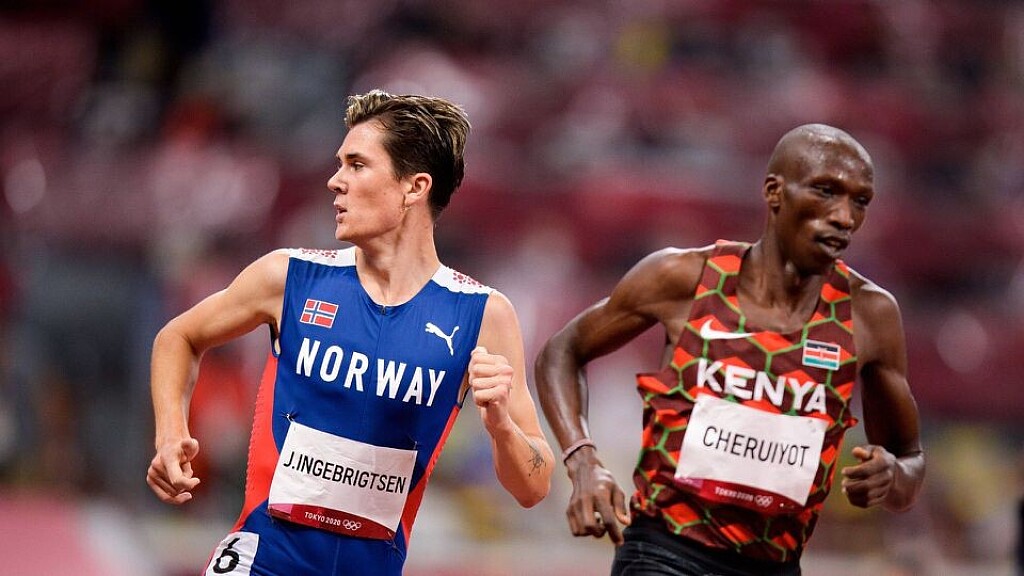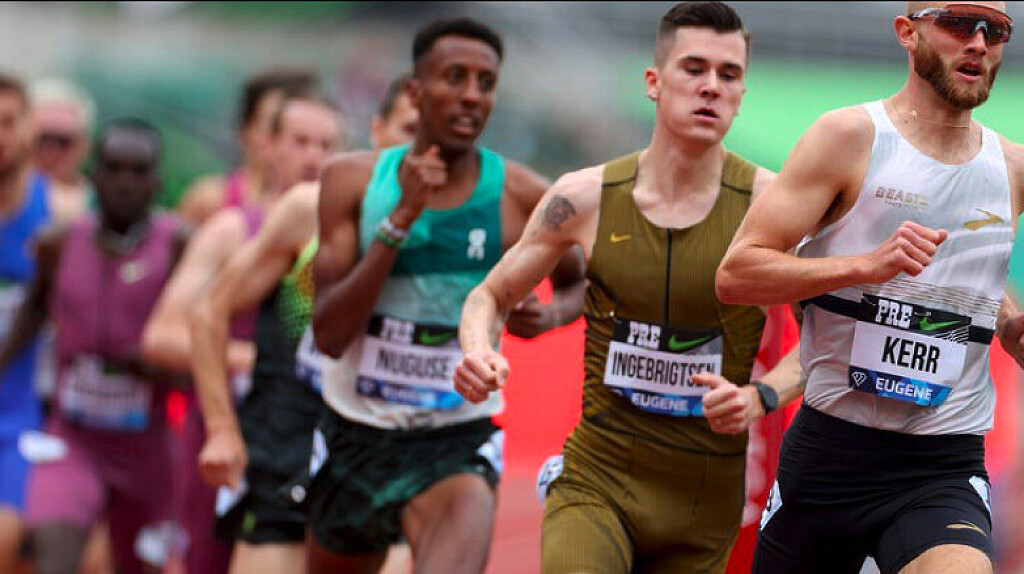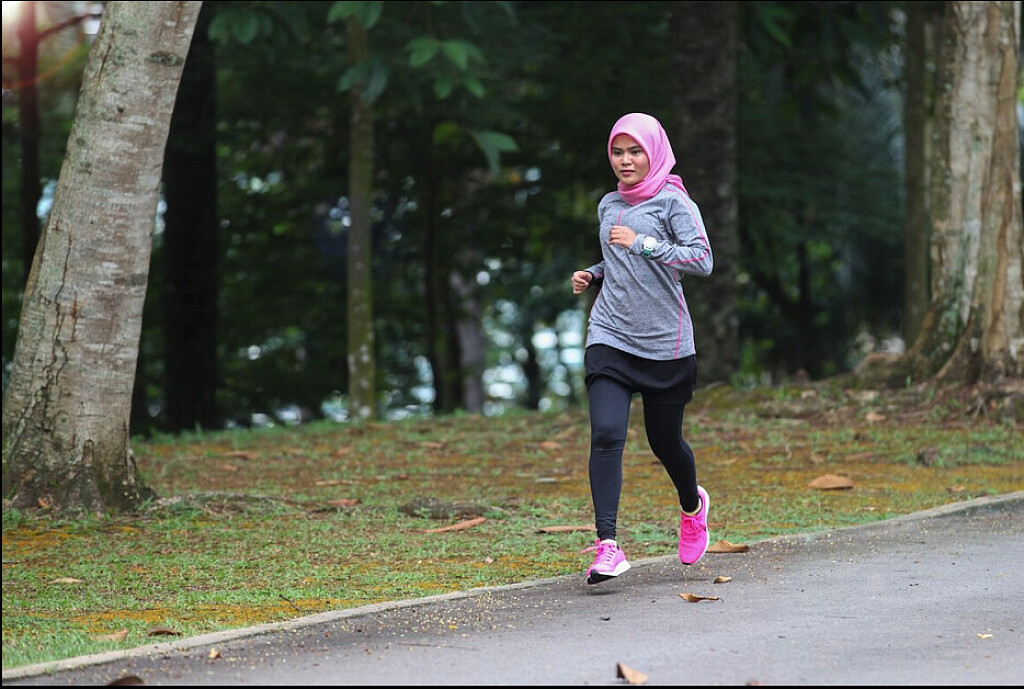Running News Daily
Top Ten Stories of the Week
6/8/2024
These are the top ten stories based on views over the last week.
Former Milano Marathon champion provisionally suspended by AIU for whereabout failures
The 2019 Abu Dhabi Marathon champion has gotten himself in bad books with the Athletics Integrity Unit following his recent charge.
The 2019 Abu Dhabi Marathon champion Reuben Kipyego has been provisionally suspended by the Athletics Integrity Unit for whereabout failures.
The AIU, in an announcement on Tuesday, June 4, noted that Kipyego has been suspended temporarily from participating in any competition or activity in athletics prior to a final decision at a hearing conducted under the World Athletics Anti-Doping Rules or the Integrity Code of Conduct.
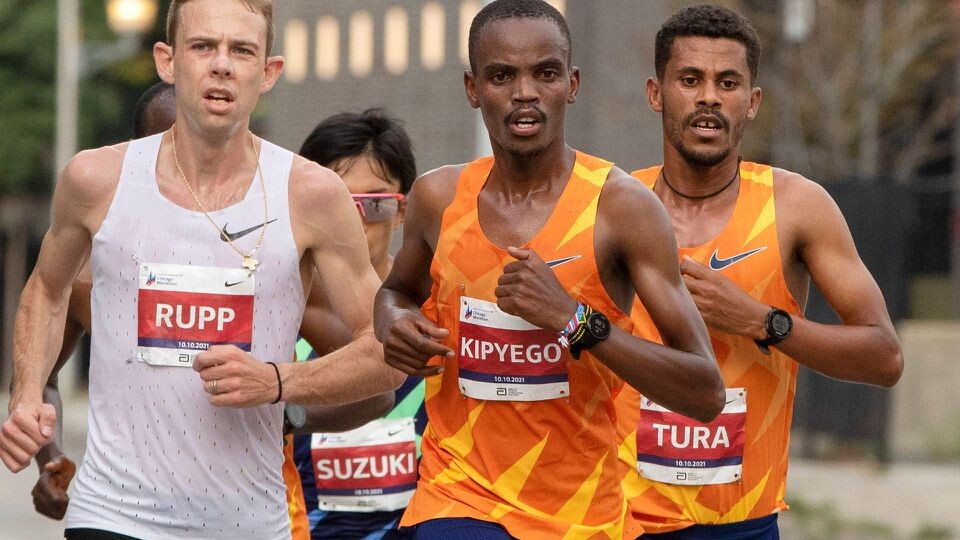
Kipyego’s final race was the NN Rotterdam Marathon in 2022 where he finished an impressive third. He has also competed in three races in 2021 where he struck with a win at the Milano Marathon and later finished eighth at the Chicago Marathon before finishing second at the Abu Dhabi Marathon.
He has been competing sparingly and launched his career with the marathon, hence no record of him competing on the track. He started off his career with the full marathon at the 2019 Maratón de Buenos Aires Ñandú where he finished second.
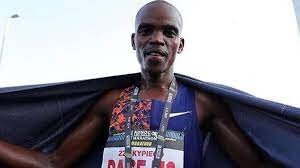
Meanwhile, for a provisional suspension, the AIU further noted that some of the cases remain under investigation, while others are the subject of a notice of charge and so will also appear on the list of Pending First Instance cases.
AIU further noted that a provisional suspension is mandatory under the World Athletics Anti-Doping Rules following an adverse analytical finding for any non-specified substance on the Prohibited List.
A Provisional Suspension may be imposed in other doping cases depending on the nature and circumstances of the case in question. It is imposed in a non-doping case does not in any way abrogate the presumption of innocence and it is not an early determination of guilt. Rather, it is an order made on a precautionary basis to safeguard the interests of the sport.
(06/04/24) Views: 266Abigael Wuafula
A champions diet! Sha'Carri Richardson reveals her favorite go to meal for breakfast
Sha'Carri Richardson has shared the best meal she prefers having for breakfast mostly on race day.
Reigning world 100m champion Sha’Carri Richardson has disclosed her go to breakfast meal when preparing for major races.
The world’s fastest woman in 2023 told Eating Well that she is certainly a foodie and she loves trying out different meals but she never goes back to eating what she doesn’t like.
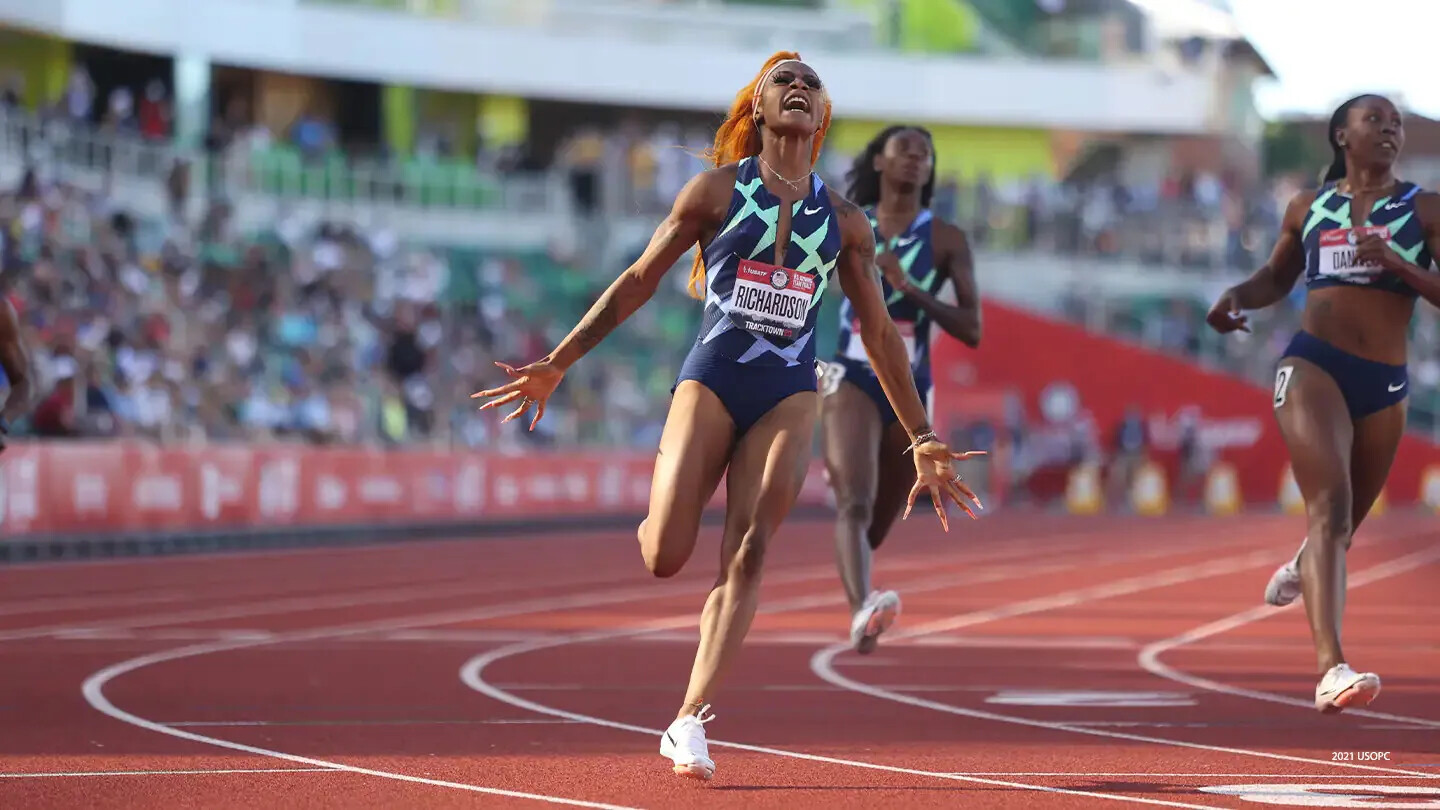
Speaking of her typical breakfast, the American noted that it depends on timing but she spoke of her love affair with eggs on race day or any regular day.
She recently signed an ambassadorial deal with the Oikos Pro Drink and she seems to be loving it already since she emphasised that she on days when she doesn’t feel the need to have heavy breakfast, she usually goes for the drink.

“I'm a big foodie. I like to eat a little bit of everything when it comes to food. I like to try everything at once—no, I may not eat it again if I don't like it, but I'm very open to trying any type of food once before cancelling it out.
“I would say in the morning, it depends on timing and if I have time to get up and make something, but I definitely am a big fan of eggs. Eggs are something I really like to eat in the morning on race day or any regular day.
“And when I'm on the go and I don't want something too heavy starting the day, I definitely like my Oikos Pro Drink that contains 23 grams of protein.
“That is something convenient that I like to include. I'm able to drink it really quick and I do still feel like I'm putting the nutrients in my body that I can have going into practice on a day-to-day basis,” she said.
Richardson added that after training or a race, she usually prefers ice bathing or getting into a hot tub to decompress from the long day.
“I would say recovery has just been being attentive to doing my ice bathing or hot tub, as well as just decompressing from the day later on in the evening.
“It's something I like to do. I'll be talking to my family or getting in the pool doing some stretching and some abs. That’s how the day ends for me,” she said.
Speaking of her favourite snacks, the 24-year-old said: “I like dried fruits a lot, specifically dried mangoes, as well as peanuts and almonds. I keep it very light and straightforward when it comes to snacking.”
(05/31/24) Views: 157Abigael Wuafula
Is Beatrice Chebet Kenya's best bet for double gold at Paris Olympics?
With Olympic glory beckoning, is Beatrice Chebet Kenya's smart bet for double gold?
Two-time World cross country champion Beatrice Chebet is one of the Kenyan long-distance runners who are always known to show up when it matters and she stunned the whole world this past weekend with her world record.
Chebet, the world 5000m bronze medallist, competing in her second 10,000m event since she started her career, became the first woman in history to run under 29 minutes over the 25-lap race.
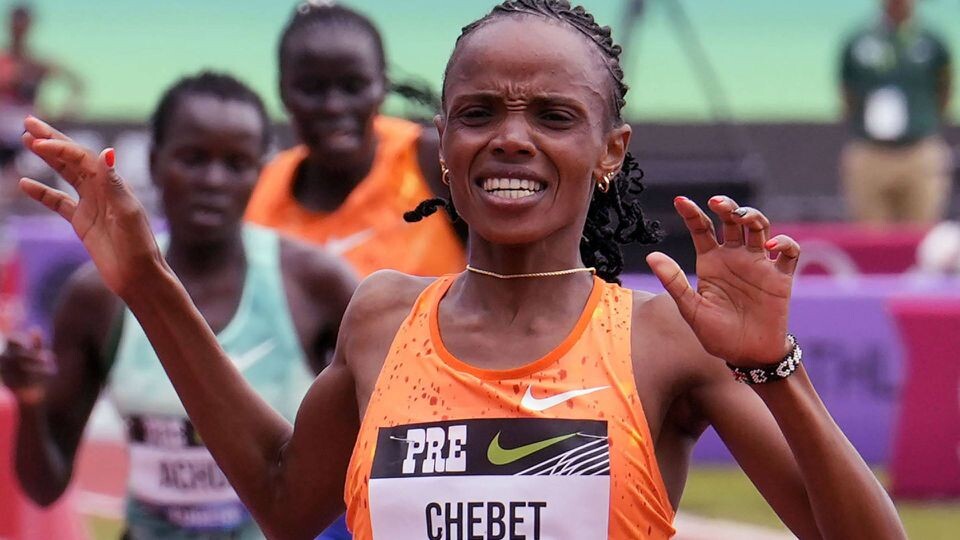
The 24-year-old stopped the clock at 28:54.14 to shatter Letesenbet Gidey’s world record time and automatically earn herself a spot in the women’s 10,000m team to the Paris 2024 Olympics where she has expressed interest in doubling in the 5000m and 10,000m.
After her world record feat at the Prefontaine Classic, the Diamond League Meeting in Eugene, Chebet said: “I came to run the 10,000m in order to get qualification and a great position for Paris because I want to double. I’m happy because it’s my first time to be on an Olympic team and with good health and hard work, I will medal again in Paris and that will be my favourite medal.”
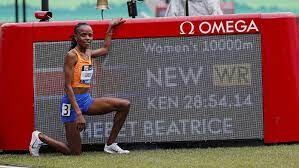
The former world silver medallist will be making her debut at the Olympics and as far as things stand, she might just be the surprise winner in the two distances.
She has been in impeccable form this season, following her world record on the New Year’s Eve at the Cursa dels Nassos where she clocked an impressive 14:13 in the 5km road race.
The Commonwealth Games 5000m champion then proceeded to successfully defend her cross-country title in Belgrade, Serbia going up against a strong field that included world 10km record holder Agnes Jebet and Sirikwa Classic Cross-Country champion Emmaculate Anyango.
She opened her track season at the Diamond League Meeting in Doha, Qatar, flooring a strong Ethiopian contingent to win the women’s 5000m race. So far this season, it is evident that Chebet is a strong contender for the top prizes in Paris and no one is going to stop her.
Double world record holder Faith Kipyegon is yet to open her season following a slight injury setback and she might pose as Chebet’s closest challenger, but until then, the National Police Officer is in the right shape to carry the day in the city of love.
(05/31/24) Views: 154Abigael Wuafula
How to get back into speedwork after your half-marathon
Well, you’ve done it—you’ve completed a half-marathon! After a well-deserved few days or a week off, you’re probably already planning your next race. While it’s good to be enthusiastic, stepping back into speedwork after a half-marathon can be tricky. It’s crucial to ensure you’re doing the right workouts to avoid injury or overtraining.
Let your body recover
After running a half-marathon, it’s essential to give your body adequate time to recover. The amount of recovery time varies among runners, but at least one or two days off all exercise is recommended, regardless of whether you are a beginner or a seasoned veteran. For runners coming off their first half, it could take at least a week to fully recover. Pay attention to any lingering soreness or fatigue. If you’re still feeling sore or overly tired, extend your recovery period for a few more days.

Ease back into things
The easiest way to get injured is by overdoing an activity while your body is still sore. When it’s time to begin running again, start with a gradual re-introduction. Begin with short, easy runs, maybe every other day, and slowly increase the distance and intensity. This is the best and safest way to regain your fitness so you can resume your regular weekly programming. If you feel you’re losing fitness but aren’t ready to start running yet, activities like swimming, cycling, brisk walking or yoga can help you build strength and endurance while aiding in recovery.

Before you begin your first couple of speed sessions post-race, you’ll want to have built your weekly mileage back up to around 40-50 per cent of your regular training load. For most runners, this can take two to four weeks. Doing this also builds up your aerobic endurance, providing a solid base for when you resume speedwork. After a week or so of running post-half-marathon, start incorporating strides into the end of your easy runs. Strides are short, controlled (20-30 seconds) bursts of speed that help re-introduce your legs to faster paces without the intensity of a full speed workout.
Start small
As tempting as it might be to immediately pick up where you left off with speed workouts, starting with shorter, interval-based sessions is the easiest and most effective way to re-introduce speedwork into your training. You can gradually increase the duration and intensity as you progress.
Here are some easy interval sessions to get your body acclimated to speedwork again.
five reps of 2 mins @ 10K pace with 90 seconds jog rest.
three reps of 1K @ half-marathon pace with two minutes rest
8-10 reps of 30 seconds on, 60 seconds jog.
(05/31/24) Views: 142Marley Dickinson
Brian Komen promises to deliver 1500m medal at Paris 2024 Olympics
In his bid to stop Norwegian and British dominance in the 1500m, Brian Komen has promised to deliver a medal for Kenya at the Paris 2024 Olympic Games.
African Games 1500m champion Brian Komen has promised to deliver a medal for Kenya if he makes the cut to the Paris 2024 Olympic Games.
Komen, the latest 1500m runner to emerge from Kenya, has managed to cement his name and track and field fans cannot wait to see what the athlete is capable of as he gears up to take on the creme de la creme of track and field this season.
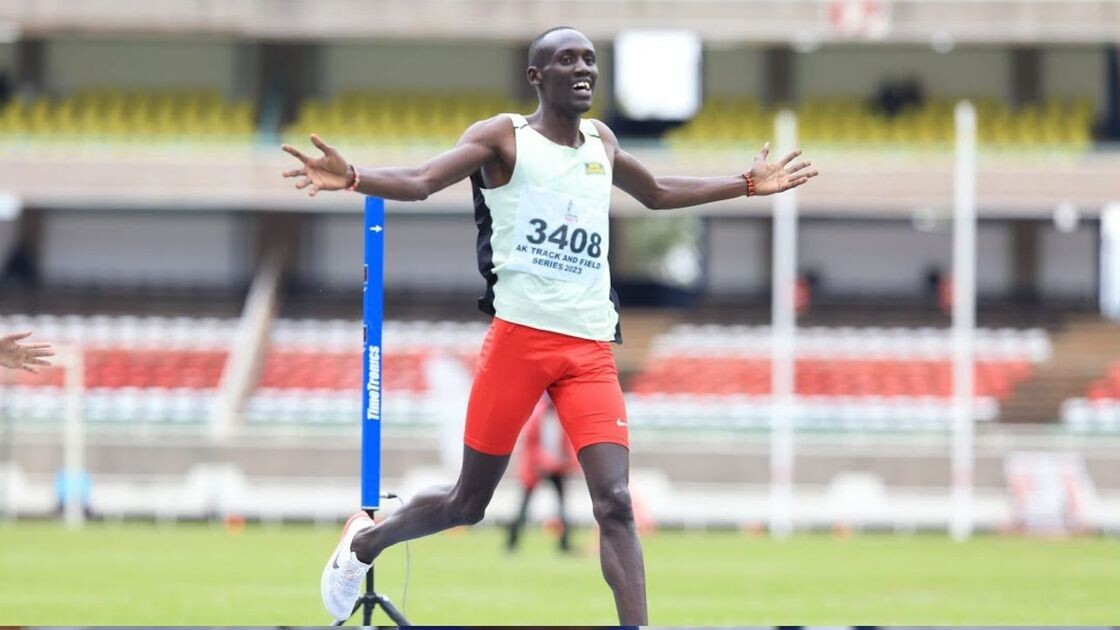
The Kip Keino Classic champion has been in great shape so far, crediting all his wins to training well and working hard. Many might wonder where he has been following the faulty performances from Team Kenya in the 1500m.
“I was in school, now I’m back and I’ve been training very hard and that’s why I’m here. I was studying at Egerton University pursuing a course in Microbiology," Komen said.
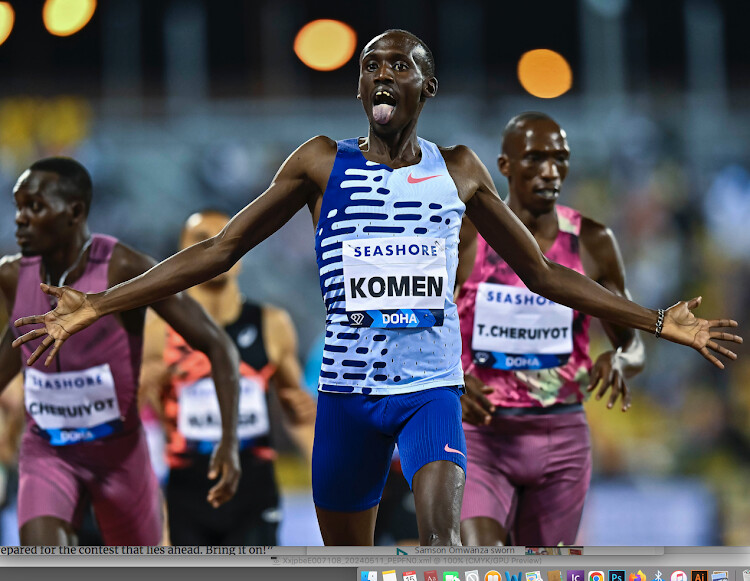
“When I feel like I want to go, I just decide to go all in. I feel like my body is doing okay and I’ve been training very hard. I can’t say I’m going to win a gold but God knows that. I’m going to fight for a medal, that’s my goal.
“I’m focusing on Paris and I want to win a medal and if I manage to win gold, that’s well and good. My coach used to run and he really motivates me."
The 25-year-old has been unbeaten in the 1500m so far this season, starting from the African Games where took gold before dominating the Kip Keino Classic.
He was also in action at the Diamond League Meeting in Doha, making his long-awaited debut, and managed to stun the world once again with his tactical run. Komen later stole the show at the National Championships, owing to the fact that it was his first time competing there.
(06/01/24) Views: 140Abigael Wuafula
Keira D'Amato wins Run for Women
Keira D'Amato of Richmond, Va. led from start to finish to win the 46th Delightful Run for Women on Saturday morning in Albany.
D'Amato, former American record-holder in the marathon and half-marathon, prevailed in a time of 15 minutes, 41 seconds on the 5-kilometer course that begins and ends on Washington Avenue next to the state Capitol.
D'Amato held off a late challenge from Amy Davis-Green of Madison, Wis., who came in second in 15:45, followed by Jessie Cardin of Sutton, Mass. in third at 15:51. Davis-Green and Cardin are teammates with the Hansons-Brooks Original Distance Project.
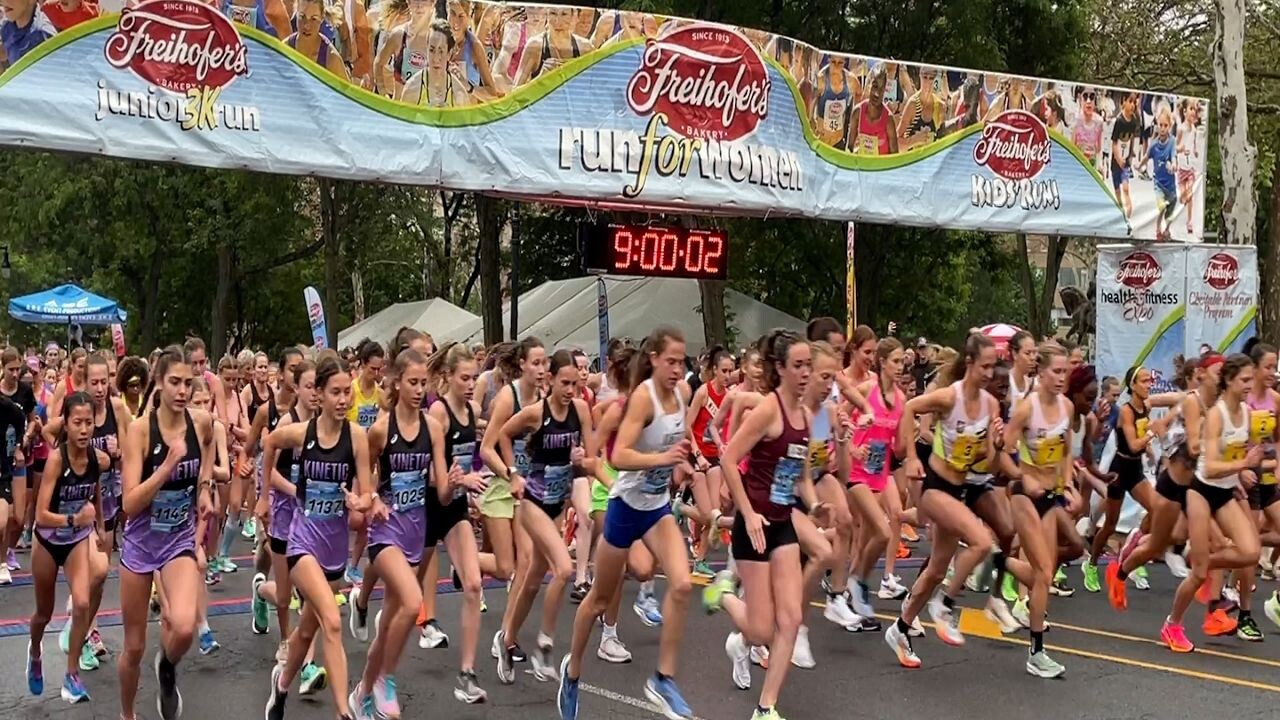
Freihofer’s Run for WomenTop finishers
1. Keira D’Amato, 15:41
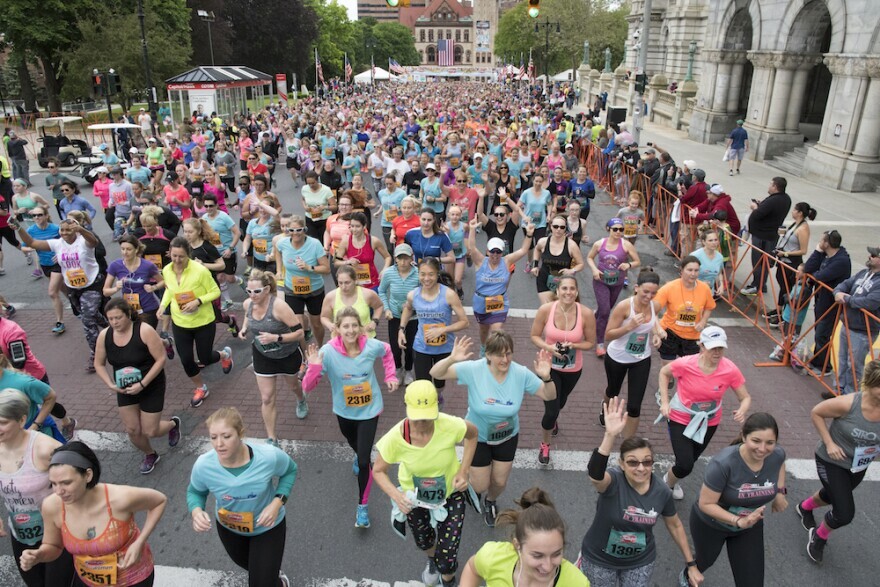
2. Amy Davis-Green, 15:45
3. Jessie Cardin, 15:51
4. Anne-Marie Blaney, 15:57
5. Regan Rome, 16:39
6. Whitney Macon, 16:47
7. Emma Eastman, 16:54
8. Annmarie Tuxbury, 17:00
9. Kathryn Munks, 17:02
10. Amanda Chambers, 17:30
Masters division (40 & over)
1. Sascha Scott, 19:04
2. Meg Versteegen, 19:13
3. Margaret McMahon, 19:38
(06/01/24) Views: 138Mark Singelais
Double Kenyan victory at the Stockholm marathon
On Saturday, the classic Stockholm marathon ran for the 45th time - and then it was a double Kenyan victory.
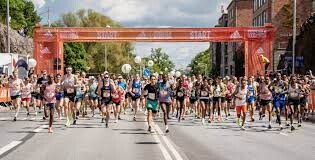

Fredrick Kibii was first to finish on the men's side in 02.14.17 and on the women's side Marion Kibor finished in 02.31.46 to complete the double.
First Swede in the finish line and SM winner on the men's side was Ebba Tulu Chala, and SM gold on the women's side went to Carolina Wikström.
(06/01/24) Views: 136Timothy Cheruiyot shares key reason why he loves competing against Jakob Ingebrigtsen
Timothy Cheruiyot has explained why he loves running against his track rivals, singling out Jakob Ingebrigtsen as one of his favourite.
Former world 1500m champion Timothy Cheruiyot has opened up for his love competing against track rival Jakob Ingebrigtsen.
Cheruiyot and Ingebrigtsen were in action at the Diamond League Meeting in Oslo, where they went head-to-head to the finish line with the Norwegian middle-distance runner dramatically diving over the line to take the top prize.

The two-time world 5000m champion crossed the line in a world leading time of 3:29.74 ahead of Cheruiyot who came in close second in 3:29.77. Frenchman Azeddine Habz sealed the podium, clocking an astonishing season best time of 3:30.80 to cross the finish line.
Cheruiyot, the Olympic Games silver medallist, noted that he loves competing against talented athletes like Ingebrigtsen who usually push him to the limit. Going into Oslo, Cheruiyot had high expectations to win the race but expressed satisfaction with his second-place finish.
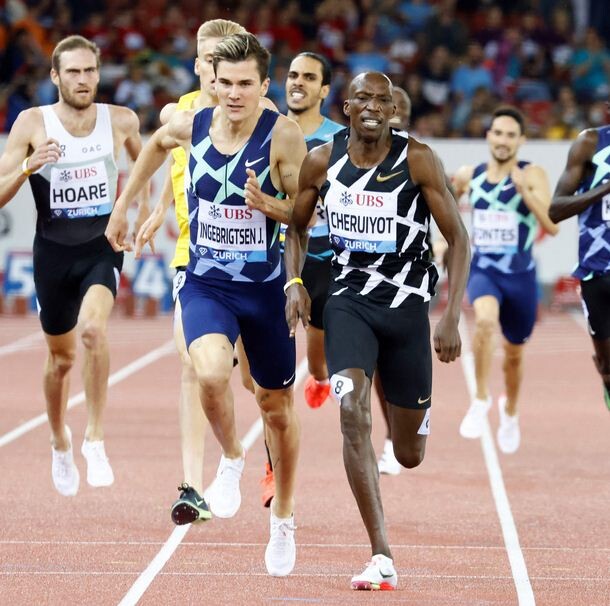
He has been out with an injury bout but is slowly coming back to competing and will certainly be a force to reckon with.
“Racing with my compatriot, Jakob - it makes me happy, he's a strong guy and he finished fast today. I'm glad to be here in Oslo for the second time, the track is amazing.
“I was expecting the win but I'm satisfied I managed to run under 3:30 today. Now, I'm going home to prepare for the Kenyan trials - I need to finish in the top three.
“For the last nine months, I've been injured so I need to focus on training more to improve my fitness ahead of Paris, where I hope to get another medal for my country,” Cheruiyot said.
He opened his season with a second-place finish at the Diamond League Meeting in Doha before doubling in the 1500m and 800m at the National Championships.
(05/31/24) Views: 118Abigael Wuafula
Why the "Norwegian Method" Training Craze Is Here to Stay
In a highly anticipated race at the 2024 Prefontaine Classic, Jakob Ingebrigsten pitted his revolutionary "Norwegian method" of training against some of the best milers in the world.
The “Mile of the Century”—of the twentieth century, that is—was a duel between John Landy and Roger Bannister at the 1954 Empire Games in Victoria. The two men were, at the time, the only two sub-four-minute milers in the world: Bannister had beaten Landy to the punch by 46 days, but Landy was the reigning world record holder. Their end-of-season clash was as heavily anticipated as any heavyweight boxing duel. Landy led until the final bend, at which point he famously glanced over his left shoulder at precisely the moment that Bannister surged past on his right.
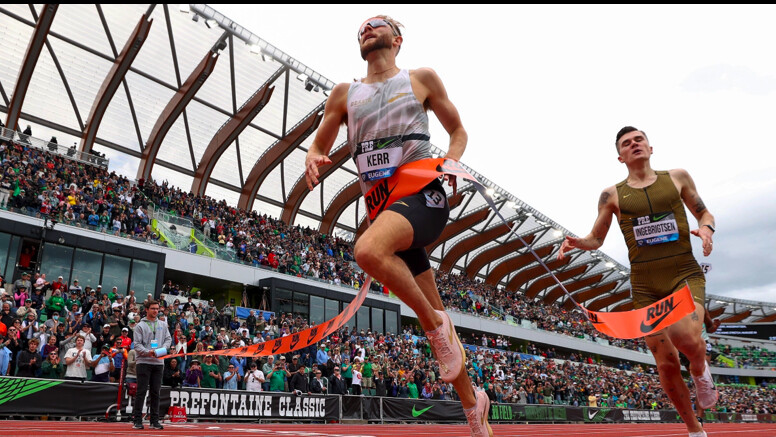
The mile of the current century, at least in terms of pre-race hype and intriguing storylines, took place on Saturday at the Prefontaine Classic track meet in Eugene. It was a gigantic multidimensional grudge match between Jakob Ingebrigsten, the blunt-speaking Norwegian wunderkind who won the 2021 Olympics at the tender age of 20 and whose training methods have sparked wholesale upheaval in the endurance world, and almost every runner who has beaten him or come close to it in recent years—most notably Josh Kerr, the Scotsman who upset him at last summer’s World Championships and has been engaged in an increasingly testy war of words with him ever since.
What gave the race an extra layer of significance, beyond the usual battle for personal supremacy, was that clash of training ideas. Ingebrigtsen is the foremost exponent of what has come to be known as the “Norwegian method” of endurance training. Its hallmark is carefully controlled workout intensities, pushing just hard enough to stimulate adaptation without incurring fatigue that would compromise the next workout. In Ingebrigtsen’s hands, that involves twice-a-week double threshold sessions: workouts like ten times a kilometer with one minute recovery in the morning and evening, with regular ear pricks to check lactate levels and keep the intensity in the right zone, on Tuesdays and Thursdays.
A similar approach has also taken Norwegians to the top of the podium in other sports like triathlon and cross-country skiing, and athletes from other countries have begun emulating it. Norwegian-style training is “the big, sexy thing,” as U.S. miler Hobbs Kessler put it. It might even be “the next step in the evolution of distance running training,” as a group of sports scientists suggested in an academic paper last year (which I wrote about here). It’s very hard to do controlled studies of entire training philosophies, as opposed to specific workouts. So the best litmus test, I suggested, would be clashes on the track leading up to the Paris Olympics. Saturday in Eugene was the first such test.
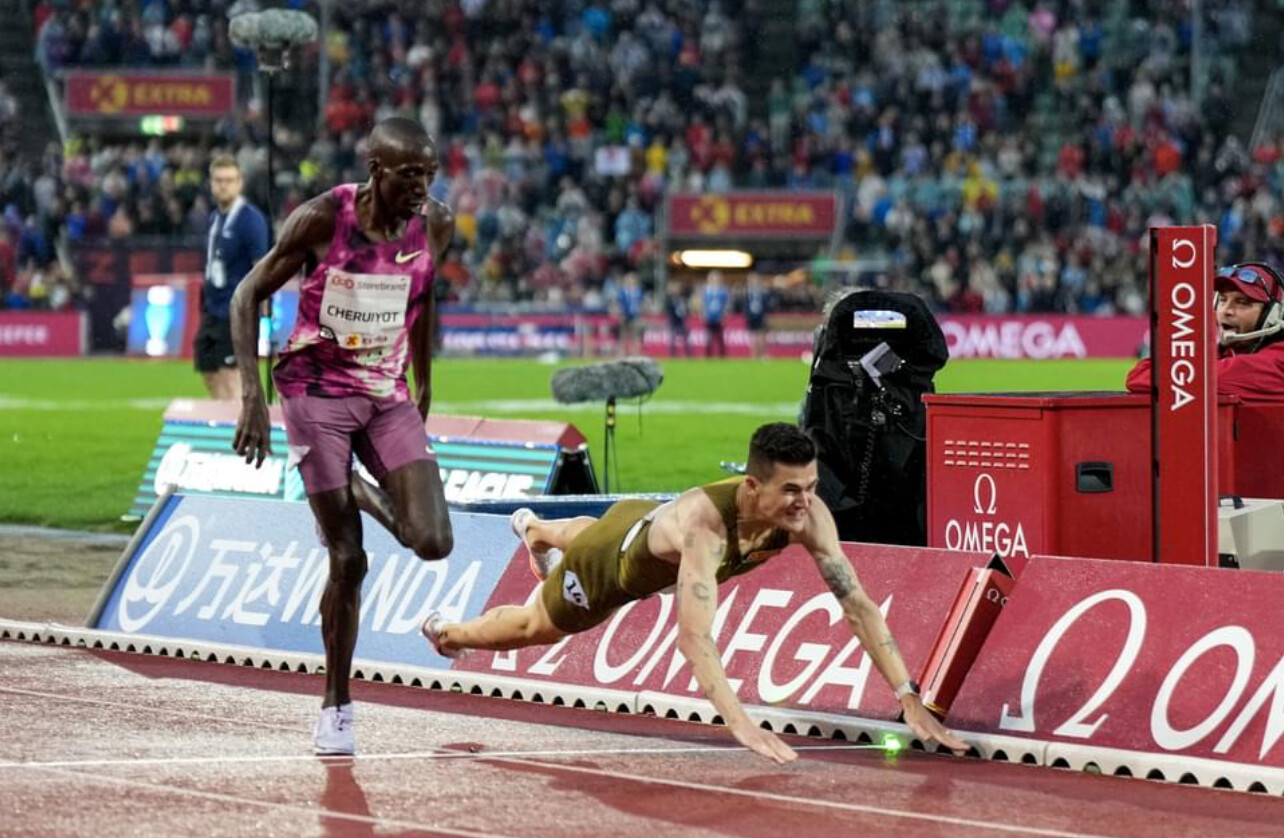
Sexy new things don’t stay sexy and new forever, and it’s fair to say that some of the shine of Norwegian training has worn off since last year. The most notable reputational hit was Kerr’s 1,500-meter win at last summer’s World Championships, kicking past Ingebrigtsen in the final lap after the Norwegian had led most of the race. One loss could be blamed on bad luck, but that made three times in a row: another Scottish runner, Jake Wightman, had outkicked Ingebrigtsen in strikingly similar fashion at the 2022 World Championships, and Ethiopian star Samuel Tefera did the same at the 2022 World Indoor Championships. That starts to look like a systemic flaw in the training approach. While Ingebrigtsen was carefully monitoring his moderate-intensity threshold intervals, Kerr and Wightman and Tefera were presumably ripping off all-out sprints—and they had a racing gear that he seemed to lack.
In Eugene, a rabbit led the field through a quick first half-mile. When he stepped off, it was Kenyan runner Abel Kipsang who pushed onward, with Ingebrigtsen following patiently behind. This was already a surprise: Ingebrigtsen is usually the one pushing the pace. Then, with a lap and a half still remaining, it was the fast finisher Kerr who surged into the lead and made an early bid for victory. Each man, it seemed, was playing the other’s game. The last lap ticked by in slow motion, Kerr unable to pull away and Ingebrigtsen unable to close the gap. That’s how it finished: Kerr in 3:45.34, Ingebrigtsen in 3:45.60, and then seven more men under the once-impregnable 3:50 barrier. In 11th place was Cam Myers, a 17-year-old from Australia, with a time of 3:50.15—two seconds faster than Ingebrigtsen himself ran at Pre as a 17-year-old in 2018.
It would be as foolish to give up on Norwegian training based on a few individual losses as it would be to anoint it the “next step” on the basis of a few individual wins. But if Ingebrigtsen keeps losing, that’s going to reinforce doubts about whether his approach is as effective for head-to-head racing as it is for time trials. There are plenty of caveats: for example, an Achilles injury disrupted Ingebrigtsen’s training for several months over the winter. But there are also other questions. What has happened to his older brothers Henrik and Filip? Both were world-class milers in their own right, but both have been struggling in recent years, as have other prominent Norwegian athletes like Olympic triathlon champion Kristian Blummenfeld, raising questions about the sustainability of the Norwegian approach.
And then there’s the fact that, despite all the hype about the mile, the real marquee event at Pre turned out to be the women’s 10,000 meters, where Kenya’s Beatrice Chebet became the first woman to dip under 29 minutes with a world-record clocking of 28:54.14. Kenyan runners (and their Ethiopian rivals) have been at the top for so long that it’s easy to take their dominance for granted. When I was in college in the 1990s, we were all fascinated by “the Kenyan Way.” That was the subtitle of Toby Tanser’s 1997 book, Train Hard, Win Easy. The secret, of course, was that there was no secret. There was a famous (and almost certainly apocryphal) anecdote about a Kenyan coach who was asked what separated his top runners from the merely good ones. All of them had grown up running to and from school each day, he explained; the champions also went home for lunch.
Part of the current fascination with the Norwegian training method is the suggestion that there is, in fact, a secret—a quantifiable formula, expressed in milimoles per liter of lactate in your blood, to optimize your training, rather than simply an admonition to work hard. But that’s a reductive view of what Ingebrigtsen and his Nordic peers are aiming for. The underlying philosophy of Norwegian training is that a harder workout isn’t always a better one, because it will take too long to recover from. This is hardly a new insight, but in the great merry-go-round of training fads, it was perhaps overdue for a resurgence.
In fact, the original Mile of the Century had a similar subtext. Bannister was the light-training amateur who ran on his lunch hour; Landy was a workout hero with “an insatiable appetite for interval running,” as Bannister wrote. “The great contrast in our training methods was not lost of the Press.” Bannister won the race, but it’s Landy’s training approach that proved to be more influential on subsequent generations. As Ingebrigtsen’s final showdown with his rivals in Paris looms, that’s worth remembering: even if he loses, and even if we decide that lactate meters are unnecessarily complicated, we might still have something to learn from his unorthodox training.
(06/01/24) Views: 109Outside Online
Have an Upcoming Race? You Don’t Need To Run the Full Distance During Your Training (Seriously)
I’d been her go-to person for running advice and positive reinforcement during her training block. She didn’t really need me— she was crushing her long runs and felt good about the progress she had made, so her frantic call was unexpected. I asked what was wrong.
“Well, I felt like I needed to do the full 13.1 miles,” she said. “So I did. Now my butt hurts.”

How long should long runs actually be when training for a race? Well, we'd talked about how most training plans didn’t go up to the full race distance and that it was by design. There was no need to go over 10 miles to have the fitness necessary to complete the half marathon.
Christine Conti, running coach and fitness specialist
Katherine Campbell, CPT, DPT, physical therapist, personal trainer, and running coach
So why did my friend go totally against her plan and all practical advice? Her reason: “Just to make sure I could.”
Christine Conti, a running coach and fitness specialist, is familiar with the need to instill confidence in runners throughout the training process and recognizes the fear first-time racers face.
“They're doing their training and they really believe that if they don't try it first, they'll never make it,” she says. “And we're told in life, ‘practice, practice, practice.’ You don't want the first time you do something to be the big show, right? But you really shouldn’t do it.”
When I think back to my first half marathon, I remember the doubt and fear. How can you know you can reach the finish line if your longest long run is only 10 miles?
Well, good news: There's proof you can finish a race without running the full distance first, so you don’t have to try it—and you can avoid a literal pain in the butt.
Why don’t training plans go the full race distance?
Contrary to popular belief, most training plans are designed to go just short of the full mileage of the race you're running, according to Katherine Campbell, CPT, DPT, a physical therapist, personal trainer, and running coach.
“Typically most general half marathon plans only go to 10 to 11 miles because they're made for beginners,” Campbell says. “As a beginner or even intermediate runner, you want to make sure you're recovering enough from your long runs where you can get the aerobic benefits without actually putting too much load through your musculoskeletal system to cause injury.”
This is the same reason your marathon training plan usually only goes up to a 20-mile long run—not the full 26.2 miles.
A more advanced half marathon training plan can go above 13 miles—sometimes up to 16 miles. But the thing is, many runners using this type of plan are faster than beginners who are sometimes running a double-digit-mile long run for the first time and should be conservative with their pace.
“Running faster paces would equal out to the same time on feet as most beginners running 10 to 11 miles,” Campbell says.
That’s the key: time on your feet. Especially when it comes to marathon training where slower runners could potentially be slogging through long runs for hours.
“Anything after a three-hour long run doesn't have a drastic aerobic benefit, but it does drastically increase your risk of injury,” Campbell says. “As a physical therapist and coach, I will usually cut runners off at about 3.5 hours as a peak long run. A typical ‘average’ pace is usually around a 10-minute mile, and 3.5 hours at that pace is usually 20 miles.”
Half marathoners could go up to 13 miles in under three hours, but every mile out there while you’re tired is a chance for your form to break down. Unless you have excelled in your base training and have already tackled seven miles for your long run, it’s not worth going above 10 or 11 miles for your longest long run.
What's the risk of running the full distance before the race?
The more you’re running on tired legs after a log training block, you might subject yourself to overtraining.
“Running a full distance before the race dramatically increases your risk for injury,” Campbell says.
In addition to sore and tired muscles, there are other systems in your body that go a little haywire following 26.2 miles. Your cardiovascular system is amped, your kidneys are working overtime to filter waste from your blood during and after your marathon, and your immune system weakens in the hours following such a long distance.
“There's so much happening on a physiological and musculoskeletal level that if you ran more than 26 miles before the race, you're risking not giving yourself enough time to recover to actually perform on race day,” she says.
You must tell your brain to stop doubting the structure of the plan, according to Conti.
“Beginners might look at these training plans without understanding the science behind it,” she says.
A well-made plan—meaning one made for you by a coach or designed by an expert—will bring you up to your physiological edge to help prepare your body for the aerobic challenge of a long distance and then back off just before race day.
What is ‘tapering’—and how will this strategy help you run your full race distance?
The point is you don’t want to be out on the road for too long lest you get hurt or sick. You might be wondering w
During the taper phase in half marathon and marathon training, your body recovers from the high demand of the training weeks before. By reducing training volume and intensity in the weeks leading up to the race, tapering alleviates accumulated fatigue, repairs muscle damage, and replenishes energy stores. Because you're racing on healed legs, you’re less likely to face injury.
“A nice taper two to three weeks before the race will make your legs fresh,” Campbell says. “Trust that the training, optimal recovery, and fresh legs will get you there.”
How to embrace the unknown of the last few miles
So you don’t want to get hurt. You don’t want to get sick. You’ve decided to follow your plan and have vowed not to go the full distance. But you’re still nervous. Mentally, how should you deal in the weeks leading up to the race?
It’s about trusting yourself and the training you’ve already done. As many old-school coaches will say, “The hay is in the barn.”
“I remind my clients that you should be looking at the amount of miles you run per week,” Campbell says. “You've trained your body to run the distance if you have been averaging over 26 miles per week for a marathon and 12 miles per week for a half marathon.”
If you can convince yourself that you’re physically prepared, you’re mind should settle down.
“For me, my first marathon was a bucket list item. I thought the people who ran these races were superhuman. I had no idea your body could actually run or perform for that amount of time without dying. But I trusted that if I followed the plan, I would do it.”
For her first half marathon, Conti never ran more than a nine-mile long run.
How to mentally preparing for the final stretch of your race
There are some tricks to help the last miles fly by. First, ask other runners about their experiences in the last couple miles of a race. For me, the last two miles of my first half marathon were exhilarating. I celebrated each step I took after the 11-mile mark because every step represented the farthest distance I had run in my life.
My first marathon was a little different. The last three miles were a total pain cave, but there was no freaking way I was going to give up. You’ll feel the same way.
Aside from sheer determination, here are other tactics to pull you to the finish:
1. Use the crowd
At big races, crowds will line the street leading up to the finish. Their cheering will create an electric atmosphere.
“A fun tip I like to give my runners is to have your friends and family scattered throughout the last few miles to give you that extra energy boost, too,” Campbell says.
2. Break up the distance
You might be doing this throughout the race, but it’s especially useful in the last few miles.
“It’s all mental,” Conti says. “Think about it like, ‘Oh my gosh, all I have is a 5K left. I've done this a million times.’ Or ‘I have six miles. That’s two 5Ks. That’s easy.” You're almost done. And if you have to give yourself some grace and walk a little bit, you're still going to make it. You're going to be fine.”
3. Repeat a mantra
Both Conti and Campbell say mantras are a proven way to keep your mind right as you go into the last miles of a race.
“I am all about mantras,” Campbell says. “Find one, practice it, and keep saying it.”
Campbell also suggests writing down one win each week throughout your entire training cycle.
“Read all of them and come up with three positive reasons before your race that remind you that you're prepared for the race,” she says.
(06/01/24) Views: 109

